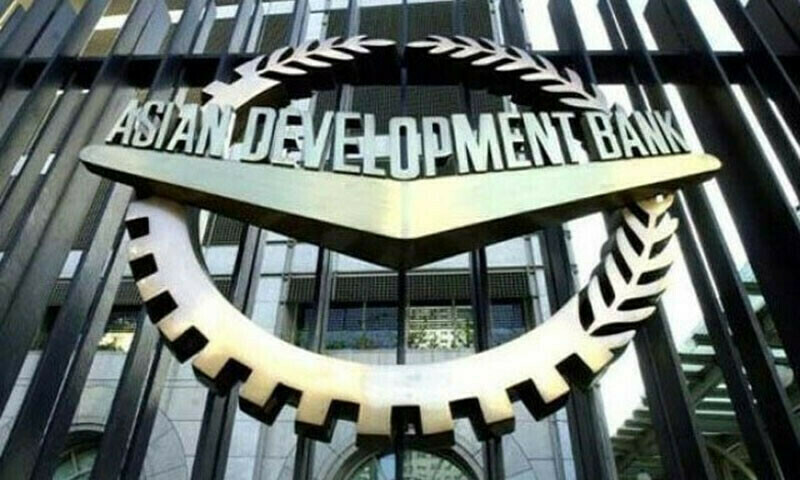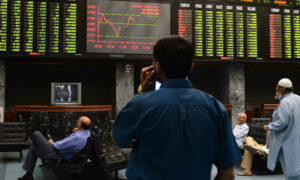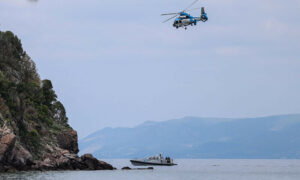ISLAMABAD: The Asian Development Bank says regional cooperation is critical to mobilise climate finance, notably from the private sector as Asia requires an estimated $1.1 trillion a year to address climate change, whereas with only $300 billion currently made available in the region, the financing needs remain large.
Regional cooperation has already proven effective in developing sustainable financial markets to raise the required financing. Regional cooperation is essential to monitor and mitigate macro-financial risks from climate change. The regional financial safety net requires an upgrading of its policy frameworks to manage climate-related crisis, says the Asian Economic Integration Report 2025 published recently.
The ADB report notes that substantial economic damage and financial risks from Asia’s high vulnerability to climate change endangers regional financial integration. Asia is hit hard by the rising frequency and severity of storms, floods, heat waves, and droughts. The threat to livelihoods from rising sea levels is especially pronounced in the region, where 70 per cent of the global population vulnerable to sea level rise resides. Immediately climate-dependent sectors like agriculture account for one-third of employment.
Economic losses from climate change are expected to reach on average 40 per cent by 2100 alarmed by several macroeconomic risks, including revenue losses from the disruption of economic activity after disasters, higher spending from subsidies to cope with rising energy prices, and adjustments in inflation and exchange rates resulting from climate change-related supply and demand shocks.
Asia hit hard by rising frequency and severity of storms, floods, heat waves and droughts
The report says the preferential trade agreements (PTAs) across the Asia-Pacific region remain relatively narrow and shallow and have had limited impact, although the expansion of PTAs underscores its strong commitment to regional integration and global connectedness.
The significant rise in PTAs, now comprising 45pc of all global PTAs, underscores Asia’s drive for expanding market access and deepening economic partnerships even amid slow multilateral progress.
While PTAs have increased intraregional trade shares in Asia, their effectiveness is hampered by shallow commitments, complex administrative requirements, and limitations in promoting export diversification and services trade. Addressing these challenges requires policy reforms aimed at simplifying trade rules, deepening commitments, and aligning rules of origin criteria with regional production patterns, it suggests.
Asia’s intraregional trade value also increased by an annual average of 8.2pc from 1990 to 2023, faster than the growth of extra-regional trade at 6.8pc. The report says economic integration has been pivotal in Asia and the Pacific’s remarkable economic growth and rapidly rising global clout over the past two decades. The ADB estimates indicate that degree of Asia’s trade integration is comparable to that of the European Union plus the United Kingdom.
The report says global investment patterns have been influenced by geopolitical tensions as well as major industrial developments and changing policy environment in host economies. The ADB estimates suggest that greenfield investments in trade-exposed sectors experienced sharper declines than other sectors during periods of increased geopolitical tensions.
South Asia accounted for nearly half of total Asian out migrants. Among the top 10 migrant-sending economies from the region in 2021, migrants from four South Asian economies comprised 36.6pc of the total out migrants. The intraregional migration share remained at 39.5pc, on average, from 1990 to 2021.
Migration, remittances, and tourism — or movement of people – have remained steady. Financial integration has been the lowest, being lower than in trade, investment, and movement of people, and has lagged behind that of the EU+UK. This progress in regional integration has been supported by various projects, programmes, and policy dialogue.
Cooperation through trade facilitation, along with the development of transport and economic corridors, has helped advance integration across the region. Expanding digital connectivity and efforts to address climate change — supported by shared national and regional commitments — are strategic areas for future cooperation and integration in regional public goods.
Accelerating regional cooperation on improving physical and institutional connectivity will increase tourism competitiveness and resilience, unlocking the industry’s potential for economic development. International arrivals in Asia grew at an average annual rate of 7.6pc from 2010 to 2019, outpacing the global annual average of 5.1pc — increasing the intraregional tourism share from 73.1pc to 77.3pc.
Published in Dawn, March 31st, 2025











